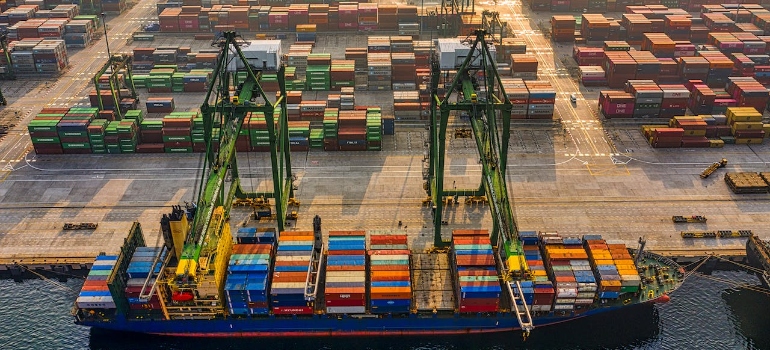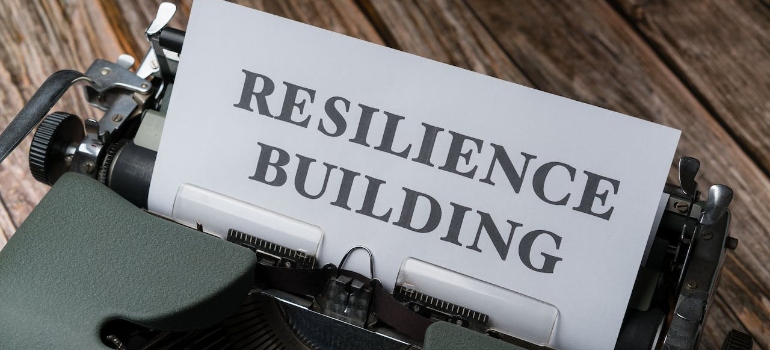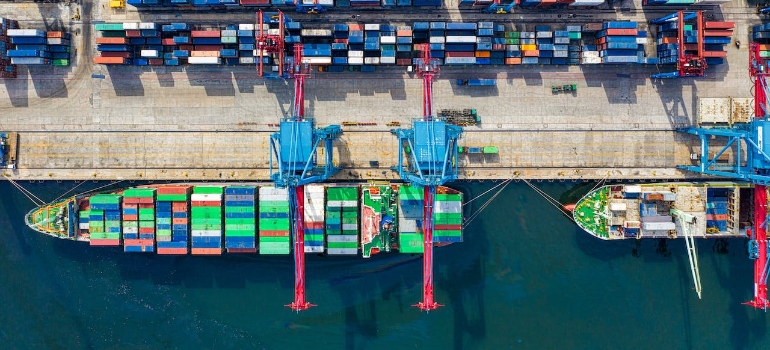Crisis Management in Logistics: Ensuring Smooth Operations
Crisis strikes without warning, and the true test for logistics lies in a swift, strategic response. That makes crisis management in logistics the strategic linchpin that ensures the wheels of delivery and supply chains continue to turn, even when faced with unforeseen events. Hence, this article distills the knowledge of Boise moving and storage specialists, translating their frontline experiences into a blueprint for logistics professionals. We aim to provide you with helpful insight to preempt disruption and sustain operations, ensuring that, when the unpredictable happens, readiness and resilience are already in motion.
Understanding the Types of Crises in Logistics
In logistics, preparedness is not just about knowing what to do; it’s about understanding what you’re up against. The types of crises that can disrupt logistics are as varied as they are challenging, each requiring a unique approach to management and mitigation. Below, we outline the main categories:
- Natural disasters
- Technological failures
- Human errors
- Security threats
Each type of crisis carries its implications for supply chains and transportation networks. From the wrath of nature to the unpredictability of human actions, logistics operations must navigate these waters with caution and agility.

Natural Disasters: Impact on Supply Chains and Transportation Routes
Natural disasters present a formidable challenge in logistics, capable of paralyzing entire supply chains overnight. The immediate effects are often devastating—blocked roads, damaged warehouses, and disrupted shipping lanes. For example, a heavy snowstorm can delay truck routes in regions where Idaho freight companies operate, while flooding might shut down critical distribution centers. A robust crisis plan considers regional disaster patterns and includes:
- Inventory Diversification: Storing goods across various locations to prevent complete inventory loss.
- Route Redundancy: Establishing alternative transportation routes and modes to circumvent affected areas.
- Supplier Networks: Collaborating with a network of suppliers to ensure that others can fill the void if one is incapacitated.
- Communication Systems: Implementing fail-safe communication methods to coordinate with all stakeholders during a disaster.
In other words, logistics operations can pivot quickly by anticipating these natural disruptions, minimizing downtime, and maintaining service continuity.
Technological Failures: Risks Associated with IT Systems and Automation
As logistics grows increasingly reliant on technology, the potential for failure multiplies. A downed server or a glitch in automation can result in massive bottlenecks. For instance, a warehouse relying on automated systems can grind to a halt if the software malfunctions, causing widespread delays. Preventative strategies for crisis management in logistics here include:
- Regular IT Audits: Conducting frequent evaluations of IT systems to identify and address potential vulnerabilities.
- Backup Systems: Establishing robust backup systems that can quickly take over should the primary IT infrastructure fail.
- Employee Training: Ensuring all personnel are trained to handle technological disruptions and know manual processes if required.
- Cybersecurity Protocols: Investing in strong cybersecurity measures to prevent breaches that could lead to larger system failures.
These preemptive measures help to maintain operational integrity and quickly restore functionality in the event of technological failures.

Human Errors: Consequences of Miscommunication and Procedural Mistakes
Due to miscommunication or procedural oversights, human errors can often cause significant logistical setbacks. A mislabeled shipment or an incorrectly entered order can cascade into delayed deliveries and unhappy customers. To combat these errors, logistics companies must:
- Standardize Procedures: Implement clear, standardized operating procedures to minimize misunderstandings and mistakes.
- Comprehensive Training: Provide extensive training for staff to ensure procedures are well understood and followed.
- Quality Control Checks: Introduce multiple quality control checks at various stages of the logistics process.
- Feedback Loops: Create systems for feedback and continuous improvement, encouraging a culture of accountability and precision.
Therefore, logistics operations can significantly reduce the occurrence and impact of human errors by emphasizing accuracy and communication.
Security Threats: Dealing with Theft, Terrorism, and Cyber-attacks
Logistics operations must be vigilant in an increasingly sophisticated era of security threats. Physical goods are at risk of theft, while cyber-attacks may target digital infrastructure. Logistics and especially freight shipping Boise professionals can strengthen their defenses through the following:
- Risk Assessments: Conduct thorough risk assessments to identify potential security vulnerabilities in the supply chain.
- Security Training: Regularly train staff on security protocols and the latest threats to stay one step ahead of malicious actors.
- Technology Solutions: Utilize technology such as GPS tracking, tamper-evident seals, and secure networking practices to enhance security.
- Emergency Response: Develop a rapid response plan for security incidents to address and resolve any breaches quickly.
If logistics companies implement these security measures, they will more easily protect their assets and maintain the trust of their clients and partners. While the types of crises that can impact logistics are diverse and often unpredictable, a combination of foresight, planning, and ongoing training can create a framework for resilience. It is how to keep the supply chain operating smoothly through any challenge.

Pre-Crisis Planning
The axiom ‘forewarned is forearmed’ rings particularly true in logistics, where the efficient flow of goods is critical. Proactive planning is the cornerstone of a resilient operation, anticipating crises before they unfold. Here’s how logistics professionals can prepare.
Identifying and Evaluating Potential Crises
Comprehensive risk assessments are the first step in pre-crisis planning. This process involves mapping out all conceivable scenarios that could disrupt operations, from environmental disasters to cyber-attacks. For a company shipping containers overseas, this might entail evaluating the probability of regional weather events or assessing vulnerabilities in their cybersecurity armor. Key actions include:
- Scenario Analysis: Systematically analyzing potential events and their impacts.
- Vulnerability Identification: Pinpointing weak links in the supply chain management.
- Impact Projection: Estimating the potential severity of different crises on operations.
Conducting thorough risk assessments enables logistics companies to prioritize their planning efforts and allocate resources where they are most needed.
Creating a Proactive Plan to Mitigate Risks
With knowledge from risk assessments, logistics firms can develop targeted strategies to mitigate identified risks. This includes:
- Contingency Plans: Crafting detailed action plans for each identified risk.
- Resource Allocation: Pre-arranging resources, including finances, supplies, and personnel, to handle potential crises.
- Policy Formation: Setting policies that guide decision-making in a crisis.
In essence, strategy development ensures that, should a crisis arise, the blueprint for response is already in place, allowing for swift and decisive action.

Preparing Staff for Efficient Crisis Management in Logistics
Training is pivotal to guarantee staff responds effectively when implementing a plan. This encompasses:
- Skill Development: Enhancing the capabilities of the workforce to manage crises.
- Simulation Exercises: Running drills that simulate crisis scenarios to test response protocols.
- Feedback Evaluation: Analyzing the training and drill outcomes to identify improvement areas.
Therefore, logistics managers can significantly bolster their crisis response by emphasizing thorough training and regular drills.
Establishing Clear Channels for Information Flow
Clear communication is the lifeline during a crisis. Establishing robust protocols ensures critical information reaches the right people at the right time. This includes:
- Information Hierarchy: Defining who communicates what information, to whom, and when.
- Technology Integration: Leveraging technology for efficient information dissemination.
- Stakeholder Engagement: Keeping all stakeholders informed during crises, from employees to clients.
Accordingly, logistics professionals can ensure accurate information flows swiftly and securely by establishing comprehensive communication protocols.
Effective Crisis Response
When a crisis hits, the theory is put to the test, and the effectiveness of the response can make or break a logistics operation. An effective crisis response hinges on several well-coordinated components.
Incident Command System: Roles and Responsibilities During a Crisis
An Incident Command System (ICS) provides a structured hierarchy to manage response efforts. This system clarifies the roles and responsibilities of crisis management in logistics, ensuring each team member knows their tasks. Essential elements include:
- Command: Leadership roles are clearly defined to guide the overall response.
- Operations: Team members who carry out the plan, addressing the immediate needs of the crisis.
- Planning: Specialists who continue to assess the situation and adjust strategies as the crisis unfolds.
- Logistics: Support personnel responsible for providing the necessary resources.
Therefore, logistics operations can ensure an organized and effective response by employing a clear ICS.

Resource Management: Ensuring Availability and Optimal Use of Resources
Effective resource management is crucial for sustaining operations during a crisis. This involves:
- Resource Inventory: Maintaining an up-to-date inventory of resources and their locations.
- Allocation Strategies: Deciding how and where to deploy resources for maximum effect, with fleet management playing a key role in the strategic positioning of transport assets.
- Supply Chain Coordination: Working with suppliers to ensure a steady flow of necessary materials.
Thus, logistics processes can maintain functionality under duress by strategically managing resources.
Communication Strategy: Keeping Stakeholders Informed and Engaged
Communication during a crisis must be timely, accurate, and actionable. An effective communication strategy involves:
- Immediate Updates: Necessary to provide regular updates as the situation evolves.
- Clear Messaging: Ensuring messages are clear and unambiguous to prevent confusion.
- Two-way Communication: Engaging in dialogue with stakeholders to address concerns and gather feedback.
Consequently, by adopting a comprehensive communication strategy, logistics operations can maintain trust and coordinate more effectively with all parties involved.
Legal and Ethical Considerations: Compliance with Laws and Ethical Standards
Navigating a crisis also means adhering to legal and ethical considerations, which include:
- Regulatory Compliance: Following all laws and regulations pertinent to the crisis and the response.
- Ethical Decision-Making: Ensuring the response aligns with ethical standards and company values.
- Transparency: Being open about the scope of the crisis and the steps being taken to resolve it.
Thus, logistics operations can uphold their reputations and minimize potential liabilities by integrating legal and ethical considerations into crisis response. It implies that an effective crisis response in logistics is multi-faceted. It demands a synchronized approach to command structures, resource management, communication, and compliance. Such integrated crisis management in logistics enables operations to survive a crisis and emerge with integrity and operations intact.
Post-Crisis Recovery and Analysis
The aftermath of a crisis presents a pivotal opportunity for logistics operations to recover and fortify their processes against future disruptions. A meticulous approach to understanding the crisis’s repercussions allows for a calibrated recovery, ensuring the organization emerges stronger and more resilient.

In the wake of a crisis, the initial focus is a comprehensive analysis of its impact. That assessment delves into the crisis management performance, examining the implemented strategies’ efficacy and the response’s agility. This stage is critical for uncovering the true extent of the crisis on operational, financial, and reputational fronts.
Assessment of Crisis Impact: Analyzing Performance During the Crisis
A detailed review of the response measures the operation’s pulse during the crisis—what worked, what faltered, and how effectively resources were deployed. Key metrics and stakeholder feedback together will paint a clear picture of the response’s strengths and vulnerabilities.
Recovery Plans: Strategies for Returning to Normal Operations
Moving forward, strategic recovery plans act as a blueprint for reinstating normal operations. These plans prioritize crucial aspects of the operation, from logistics networks to customer service, ensuring a systematic restoration of services. Resource management becomes a focal point, as re-allocation is often necessary to support recovery areas and expedite the normalization of operations.
Lessons Learned: Improving Plans and Procedures Based on Experience
With recovery underway, attention shifts to reflection. The crisis is dissected to distill valuable lessons, transforming experiences into actionable improvements, including optimizing Idaho freight routes for enhanced future responsiveness. It’s a process of translating hindsight into foresight, ensuring that the operation returns to its previous state and becomes more adept at navigating future challenges.
Continuous Improvement: Integrating New Insights into Existing Frameworks
A commitment to continuous improvement is a dynamic process that infuses new knowledge into the operation’s DNA, enhancing training protocols, updating policies, and embracing technological advancements. This phase is not a finale but a renewal—a promise to evolve perpetually in the face of an ever-changing logistical landscape.
So, in sum, the post-crisis phase is as much about recovery as it is about growth and learning. It demands a keen focus on analysis, strategic planning, and the integration of new learnings, ensuring that the next time a crisis looms, the crisis management in logistics is more resilient, responsive, and resourceful.

Everyone from the packers to the movers were awesome! They were all very professional and showed up when they were supposed to. would definitely use them again.

